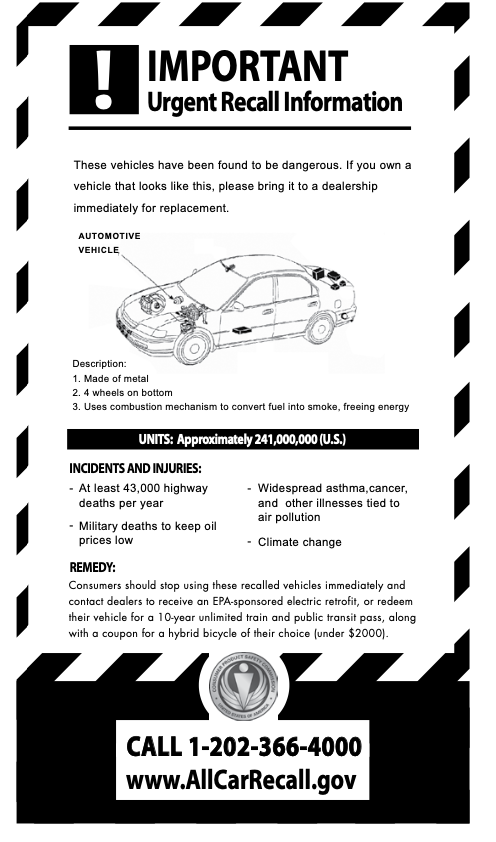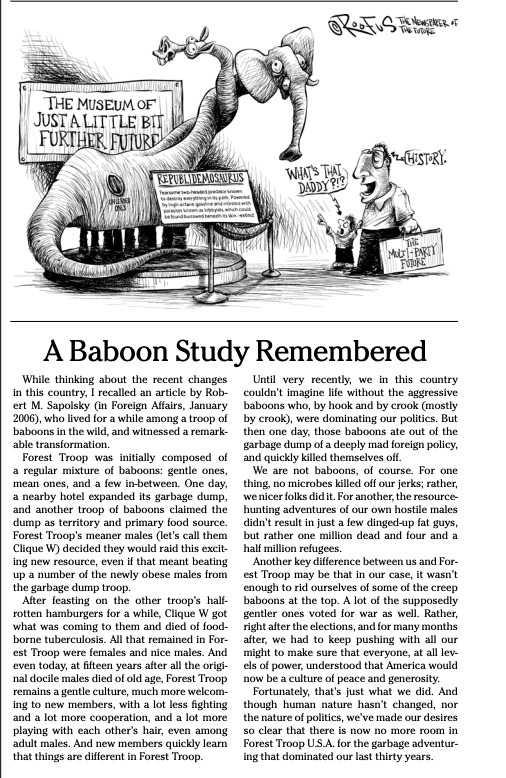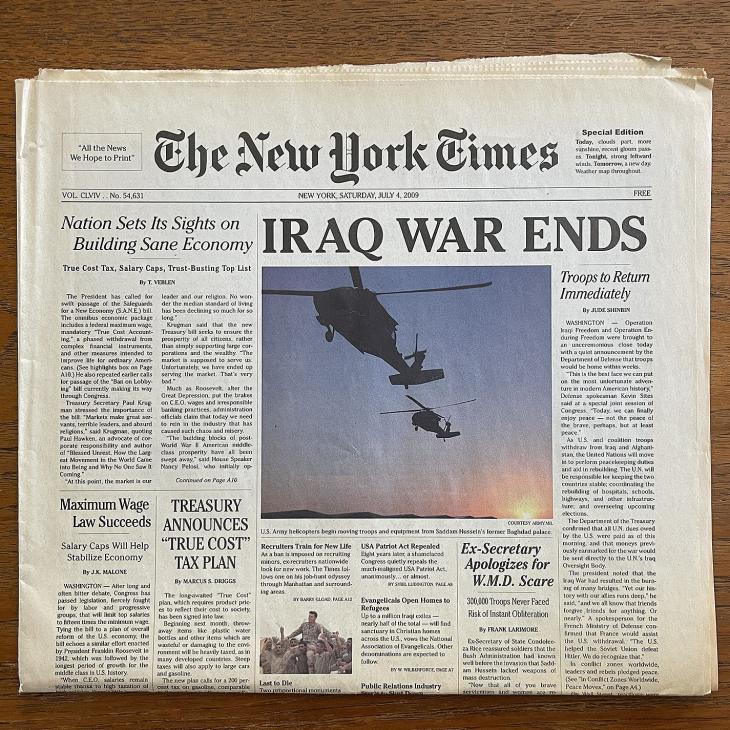The New York Times Special Edition
The Yes Men, 2008
Reviewed by Eve Holzman, A25 (BFA)
The Yes Men (Jacques Servin and Igor Vamos) are a duo of culture-jamming artist activists who aim to raise awareness and support positive change on issues that matter. They are best known for their “hijinks” and pranks that target large corporate brands, create public illusions, disrupt events, and encourage communities to take action. They’ve been known to work with student and activist groups to bring attention to various issues and always aim to introduce an element of humor to the seriousness of the topics at hand. Some of their previous works include impersonating nefarious entities, creating mass public illusions, and even trying to make a change in society within the restraint of 24 hours.
The newspaper above is a piece done by the Yes Men in 2008, published and distributed a week after President Obama was elected to office. It is dated to a year after its real release, July 4th, 2009, and is designed to give the illusion of a real New York Times newspaper. During its release in 2008, the Iraq War was 5 years in progress and many were dreaming for its end. Although it wouldn’t end for another 3 years, the fake NYT paper gave hope and a feeling of relief to those who didn’t realize it was fake at first. Each article within the newspaper contained stories of what the future could potentially (and hopefully) hold over the next year, including national health care, maximum wage for CEOs, and even a reporter's letter of resignation in which he writes with remorse for his false predictions about the Iraq war and other major events. Most of these were issues Obama ran his campaign on and promised to the public in a post-election society, which was why it had a huge shock impact when it was released.
The paper is printed (in a newspaper printing facility) to look and feel like a regular New York Times paper, and achieves exactly that. It has the same layout, from the weather report in the top right corner, to the slight crinkle cutting around the edges (and prank ads!). Thousands of New Yorkers and reporters across the country were fooled on the day the newspaper was released, and The New York Times official newspaper released a statement commenting on it saying they were “looking into it,” with a former Times reporter stating “if you’ve got one, hold onto it. It will probably be a collector's item…I consider this a gigantic compliment to The Times” (Alex S. Jones). Although almost nothing from the special edition newspaper came true, the concept and intention behind the creation of it gave the very weary public much needed “good news” during a time of hardship.
The newspaper itself contains the same language and writing style as any other New York Times newspaper. Over 20 writers made articles for the 14-page newspaper, covering a variety of topics, including World, National, Business, and Local. Each article aims to point out a flaw in our society and encourage those in charge, especially the newly elected president, to stick to their words and try to make the future a brighter vision. There was also a website made live the morning of its release, which mirrored the New York Times website with the fake articles included. It was visited over 300,000 times in the two days following the newspaper’s release. The typography and layout used perfectly mirror any New York Times newspaper, which was started in 1851, and has become an iconic view on any newsstand throughout the country. The reason it was so easily slipped into public spaces was due to its exact replication of a New York Times newspaper, with many taking a full 30 seconds of reading to realize they weren’t holding a real copy.

Throughout the newspaper, there are also images and ads that continue to mimic a real copy of the newspaper. The images are even credited in the same style as the New York Times. The ads are most likely the quickest way to realize it is a spoof newspaper, with many of them containing phrases that criticize the companies displayed. For example, an ad on the second page contains an alert for a recall of cars. Not a specific car or brand, but ALL cars. It states that cars “have been found to be dangerous,” and cause “at least 43,000 highway deaths per year.” The ad also includes a diagram and phone number to call to request information and provides a “remedy” of using public transit instead.
The newspaper was highly successful, due to its shocking headline of the Iraq war ending and the fact that everyone in New York picks up a copy of The New York Times every morning to get their news. The genius behind this idea lies in the fact that the Yes Men didn’t have to market or advertise it at all, people automatically grabbed one and started reading. Choosing such a high-profile newspaper to replicate, the Yes Men reached thousands of citizens, meaning their impact was much more widespread than many artist’s books or activist movements.

A personal favorite addition to the newspaper is a short article documenting a fake study done on baboons. It is based off of a real article written in 2006 by Robert M. Sapolsky, who lived among and studied a troop of baboons in the wild for a while. The special edition article describes a group of baboons who took over another group of baboons’ eating area and ended up dying of food-borne tuberculosis in an almost karmic motion. It then goes on to describe the now-pleasant and “gentle culture” of the baboons still alive in this area. The article then relates the baboons who took over and died to those in the US who took over an area that we were not authorized to, and caused massive death (aka the Iraq war). The article states that the US “couldn’t imagine life without the aggressive baboons who….were dominating our politics,” which draws a clear line to those in control of the war. Many other articles in the special edition follow the same formula of drawing a comedic and direct relationship between real world events and something that seems far-fetched. This allows the readers to almost laugh at the seemingly ridiculous situations they find themselves in in 2008, and forces them to think about how they feel about our contemporary society and culture.

In the aftermath of its release, there were dozens of articles written and even documentaries made. The Yes Men were invited to do interviews and the newspaper is now taught about in many art schools as an example of successful public intervention. Its impact was huge, both on society and media, and it is baffling to myself how the Yes Men were able to achieve something so impressive on such a large scale. The Yes Men continue to work with both organizations and students to train them and create ways to have a positive change around issues that matter. You can find ways to support them or dive into their archives of previous projects here: https://theyesmen.org/about
Related book in the library collection
New York Post: Early City Special, Monday, September 21, 2009
The Yes Men, 2009
